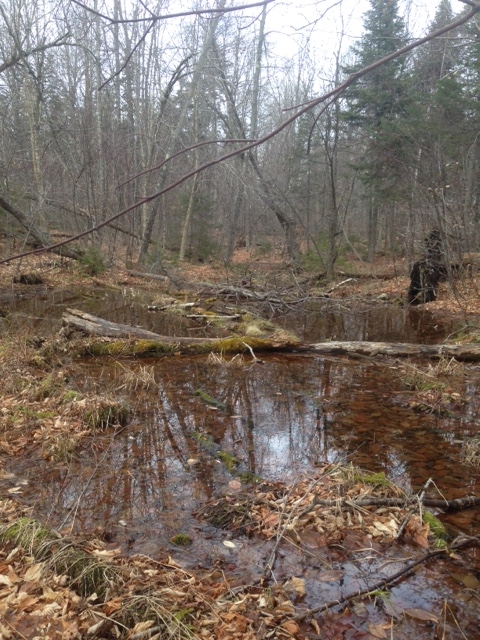Lydia Kifner, MS Student; Department of Civil and Environmental Engineering
What do arsenic (As), a toxic and environmentally damaging metalloid, and phosphorous (P), a required element for life, have in common? They have the same number of electrons in their outermost shell, which means they both will readily bond to the metal iron (Fe) in the same way. Arsenate and phosphate are two compounds that are commonly found in soils. In Maine, we haven’t seen high levels of arsenic in the sediments of vernal pools, but we have found surprisingly high levels of phosphorous. Looking at studies that involve arsenic release in wetland environments gives us valuable clues to explain phosphorous’ behavior in ephemeral wetlands in Maine.
A Stuckey et al. (2015) paper looked into the release of arsenic from sediments in the Mekong Delta in Vietnam. The researchers looked at the quality of carbon and its effect on arsenic release in the sediment profile. They also studied reactions in both seasonally saturated wetlands—inundated only through part of the year—and in permanent wetlands. In these wetlands, arsenic was released by bacteria consuming it for respiration in the absence of oxygen, using carbon as fuel. The source of carbon powering the microbes is organic matter on the earth’s surface.
In this study, the only place where arsenic was released naturally was in the near surface sediments of permanent wetlands. This is because of the carbon on the surface as well as the amount of oxygen available for degradation. In seasonally saturated wetlands arsenic is not released because organic matter has been consumed in aerobic (oxygenated) processes and there is nothing left for the bacteria to eat. However, in permanently saturated wetlands, there is no oxygen available, and so the organic matter is consumed by anaerobic (without oxygen) processes, which include release of iron bound arsenic. Therefore, permanently saturated wetlands release arsenic into pore water, but seasonally saturated wetlands do not. When arsenic gets into soil pore water, it can contaminate drinking water and poison the people who depend on it.
As arsenic and phosphorous behave very similarly, we hypothesized that vernal pools with short hydroperiods (dry down quickly) would have lower amounts of phosphorous. A shorter hydroperiod means a larger time exposed to oxygen, and more organic matter consumed aerobically. Closer examination of the pools will be needed to determine if this hypothesis is correct, though I have a sneaking suspicion it won’t be quite that straightforward. Vernal pools are complex environments, and thus their processes can’t be explained simply or completely by one system in isolation. They are inherently connected to the ecosystems around them, and thus their water chemistry is impacted by geology, water source, anthropogenic influences, vegetation, and countless other factors. It is possible that our vernal pools here in Maine are behaving in similar ways to the wetlands in Vietnam, but other factors in sediment chemistry and hydrology are affecting the phosphorous levels. Making sense of the reactions between organic matter, phosphorous, and soils’ exposure to oxygen are one piece of the puzzle that is understanding the biogeochemistry of vernal pools, which in turn affects endangered species inhabiting pools, and the larger ecosystems surrounding vernal pools.
References
Stanford’s School of Earth, Energy & Environmental Sciences. (2015, December 4). Mystery of arsenic release into groundwater solved. ScienceDaily. Retrieved January 28, 2016 from www.sciencedaily.com/releases/2015/12/151204145929.htm
Stuckey, J. W., Schaefer, M. V., Kocar, B. D., Benner, S. G., & Fendorf, S. (2015). Arsenic release metabolically limited to permanently water-saturated soil in Mekong Delta. Nature Geoscience, 9(1), 70–76. http://doi.org/10.1038/ngeo2589


